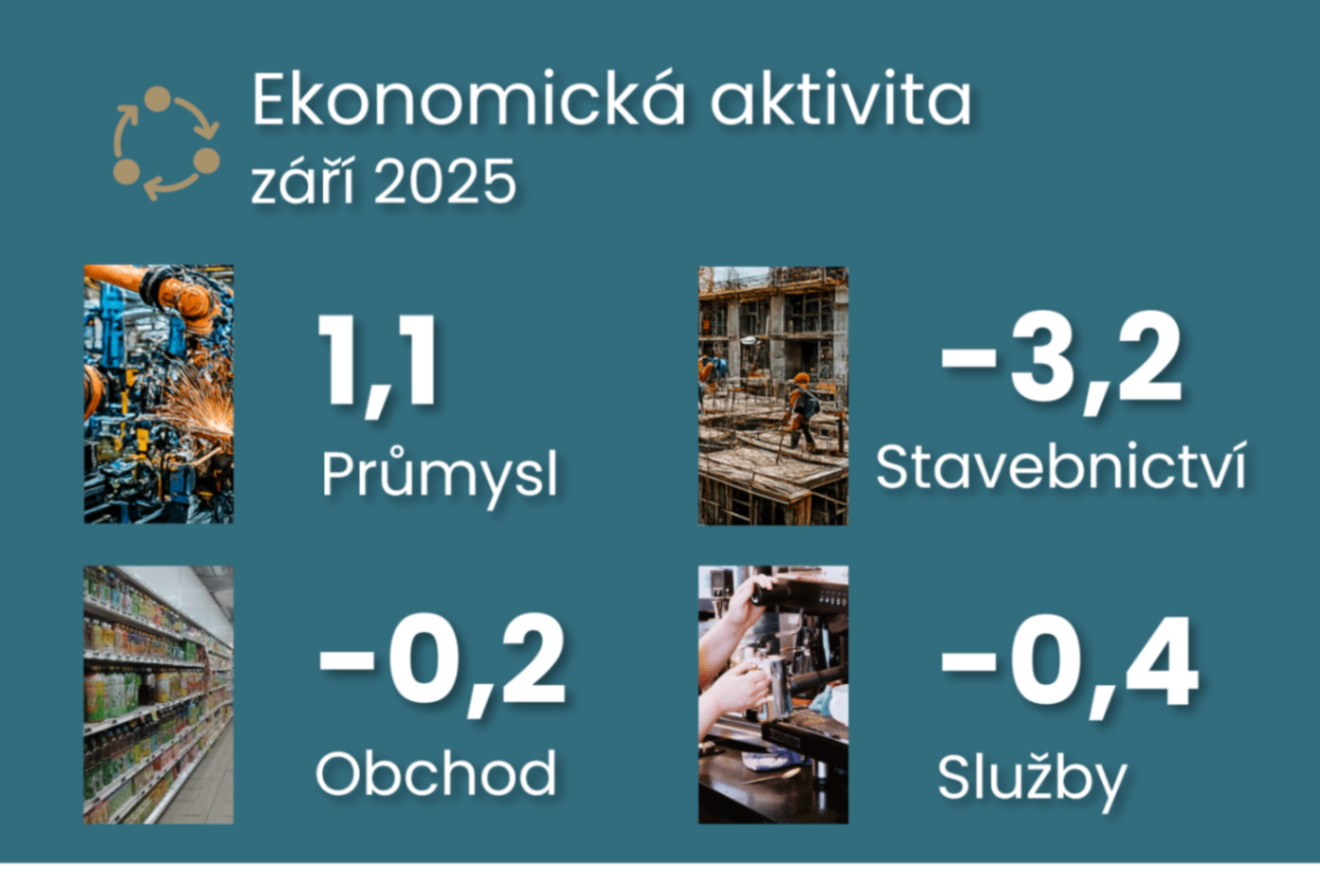Not consumption, but strong September manufacturing helped to boost GDP and October should be no different
Comment by Jaromír Šindel, Chief Economist of the CBA: Retail and services sales disappointed in September despite solid wage growth, which was confirmed by September industrial wages. A gradual but steady rise in unemployment is likely to be in evidence here. Thus, the stronger GDP growth in Q3 was helped by September's industrial production, which complemented the strong construction output of the previous months. Given sentiment, things might not be different in October.

Weak dynamics in retail trade signalled a slowdown in year-on-year sales growth. Retail sales excluding autos fell by 0.2% m-o-m in September on a seasonally adjusted basis, while sales in the core segment (excluding food, fuel and autos) fell by 0.1%. This led to a more modest 2.6% y-o-y growth in retail sales, but data from the past three months point to an average annualized decline of 0.3% (i.e., the future twelve-month y-o-y growth if the month-on-month momentum of the past three months is maintained). And similarly in the core segment, where year-on-year core sales growth has strengthened to 3.4%, but the annualized trend shows a decline of 0.6%.
Similarly in services. Services sales (both consumer and business) fell 0.4% m-o-m in September on a seasonally adjusted basis. Because of this, we observe a more modest 0.8% y/y growth, but the annualized rate has fallen by 2.1% over the past three months.
The weakening recovery in retail and service sales likely reflects higher unemployment, which translated into stagnant employment in the third-quarter GDP numbers. This resulted in stronger productivity growth thanks to 0.7% q-o-q GDP growth. Higher productivity is welcome news on continued solid wage growth in industry (+6.7% y-o-y in September and an estimated 1.5% q-o-q in Q3 on a seasonally adjusted basis, see chart below). Thus, strong wage growth is keeping household sentiment afloat.
Thus, September's momentum was rescued by industry thanks to a recovery in the non-automotive manufacturing segment. Total industrial production rose by 1.1% m-o-m on a seasonally adjusted basis. The automotive segment surprised negatively despite improved final car production. The monthly performance led to a stronger growth of 0.8% y/y and the annualized growth of 3.3% in the last three months signals further improvement.
Construction output did not keep pace in September and needs more building permits (see charts below) and continued infrastructure investment. Construction output fell 3.2% month-over-month. Because of this, we see it growing at a more modest 10.1% y/y, above the annualized decline of 0.2%.
October's economic sentiment marks the continued solid pace of the economy. Improvement is coming in the industrial sector (although the PMI warns of persistent demand issues; see analysis in the bottom charts here). Construction sentiment is slightly worse, but remains strong. Negative retail sentiment could be offset by strong consumer sentiment. And services could improve, according to sentiment.
Monthly data shows no further progress in the postcovid economic recovery, ...
... which in the third quarter were driven by construction and September manufacturing
Construction output did not maintain its upward trend in September, but sentiment remains strong, although it also weakened
The foreign trade surplus remained at a record CZK 25 billion in September (seasonally adjusted), but both exports and imports fell (see summary table below)
Continued strong wage growth (probably accompanied by stronger productivity in Q3) ...
... keeps consumer sentiment afloat, but October retail confidence does not indicate improvement into Q4
Retail and services sales had not contributed much to the stronger GDP growth in Q3 and, given sentiment, it might not be any different in October.
A comprehensive view of post-covid recovery
The low number of building permits in the Czech Republic and especially in Prague ...
... does not bode well for construction production